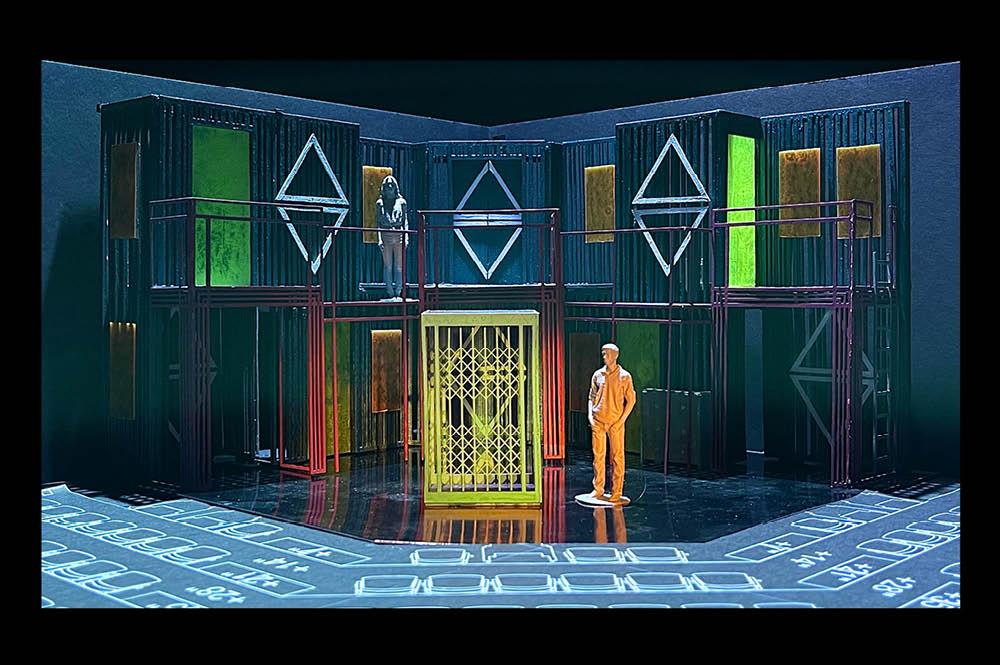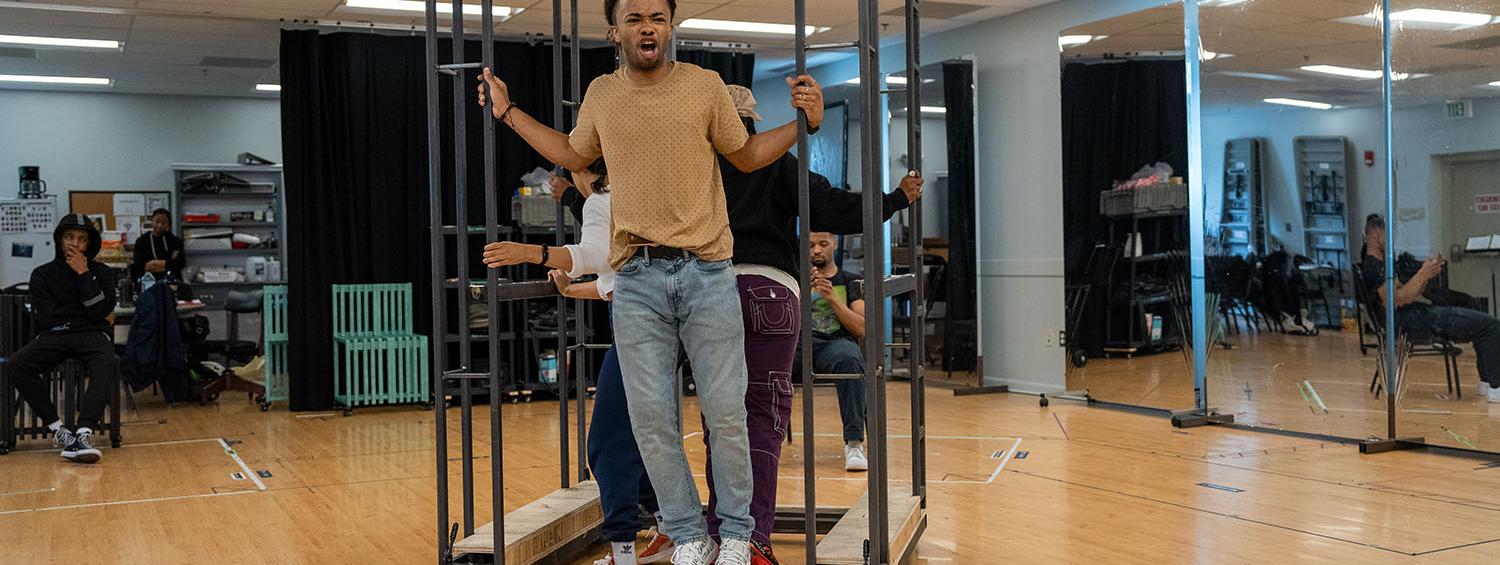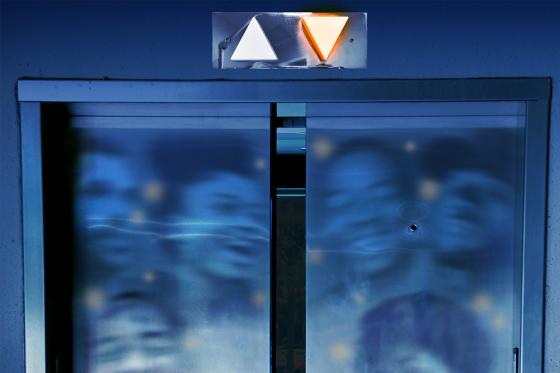I’m writing this just after our Long Way Down design run-through – the first rehearsal when all the elements of the show come together, and just before we add lights and costumes – and I’m so eager to share this great new show with you!
I chose to produce Long Way Down for many reasons: its themes feel urgent and of the moment; its combination of hip-hop and traditional music-theater forms is thrilling (if not groundbreaking); and the main character’s journey to adulthood and agency is an inspiring one, despite the challenges that surround him. The show’s development has been a rigorous, multi-year journey of workshops and public showings, ending in an extraordinary collaboration that will, I hope, move you, make you think, and make you want to talk about it afterward.
Since you’ve already gotten your tickets, you know that Long Way Down is a new hip-hop musical based on Jason Reynolds’ award-winning 2017 verse novel of the same name. Dahlak Brathwaite and Khiyon Hursey, the writers, have been hard at work during the rehearsal process adding new songs and refining others, while director Ken-Matt Martin and co-choreographer Victor Musoni are putting together the visual and acting language that will make the story soar.

The story of the show is simple: when 15-year-old Will’s older brother Shawn is killed by a rival gang, Will feels compelled to honor the neighborhood’s rules: don’t cry, don’t snitch, and get revenge. On his way to avenge Shawn’s death, Will is met by six different ghosts on the elevator ride to the ground floor, at which point the play ends, and Will makes a decision about whether to follow the rules or break them. (Click here to listen to Jason Reynolds talk about why he wrote the novel, and what he hopes folks will take away from it. Or click here to read about Jason’s career, and his thoughts on Long Way Down and other books of his being banned by school districts.)
Dahlak and Khiyon have expanded on the novel, adding moving flashback scenes of Will, Shawn, and their parents, trying to keep their family together despite a cycle of violence that threatens to rip them apart. So what’s surprising, and refreshing, about their adaptation is how it’s built an American family play atop the hip-hop music the novel inspired.
Hip-hop has for decades been part of American mainstream culture, though we don’t see a lot of it on the musical stage. With its driving beats and complex wordplay, hip-hop is the perfect musical language to capture Reynolds’ verse and the world of its story.
Listen to a demo track from the show's opening number
Many of us have been conditioned to experience musicals through a Rodgers & Hammerstein, Golden-Age lens: a live orchestra full of strings, hummable melodies and simple lyrics, and “book scenes” alternating with dance numbers. Hip-hop musicals provide different joys. So when you come to Long Way Down, turn off those expectations, and turn on your curiosity! The magic of Long Way Down (and hip-hop musicals in general) lies in appreciating its poetic and dynamic use of language, the way its rhythms interact with and elevate character expression, and its vigorous dimensionality. Think of Hamilton if you saw that show, and how Miranda’s lyrics and beats and flow told its story. (If you’re unfamiliar with hip-hop, check out our dramaturgy pages, where you’ll find a history of the genre, an interview with the writers, the intersection of Hip-Hop and Musical Theatre, activism in Hip-Hop, and even hip-hop tracks that inspired specific characters.)
We’ve not done many musicals in the Mulitz-Gudelsky Theatre Lab, but I chose the Lab for this show because I thought the intimacy of the space would forge a greater empathic connection for you to the characters. And Director Ken-Matt Martin has led his design team to create a fantastic world for the story in that intimate space.
 Image credit
Image credit
Costume designer Danielle Preston has taken a rigorous approach: because each of the ghost characters comes from a different time in the recent past, note how some actors are wearing 90s or early-00s costumes, while others are clearly of the here-and-now.
Scenic and light designer Sim Carpenter has fashioned an “urban-adjacent” world, in which the primary metaphor – Will’s entrapment and the choice he has to make – is reflected in walls full of up-or-down arrows. When you come, watch how the technically complex moving elevator – where Reynolds set his novel – becomes a character of its own.
Last, I suspect seeing this show is going to provoke a lot of discussion, and we’ve got several opportunities for you to do that at Olney, and with our community partners. Working with Director of Community Engagement Shruthi Mukund, we’ve programmed a number of cool events, from a Behind-the-Scenes interview with Jason Reynolds to our new book club, and lots more. You’ll also have access to a number of community partners who work on the issues raised in the show, some of whom will be in the lobby following talkbacks. Our front of house staff will also have a list of community resources if you want to keep the conversation going, if you’ve been triggered by the performance, or just want to learn more.
I hope reading this gets you excited to see the world premiere of Long Way Down. Many of you know that, following the production at Olney, the show is moving to the legendary Apollo Theatre in New York this fall. So you’ll get to crow to your friends – especially those jaded New Yorkers! – about how you saw it here first.
See you at the theater,
Jason Loewith
Artistic Director
Box Office: 301.924.3400
Open Wednesday - Sunday: 12:00 PM - 6:00 PM
Save 15% on Weeknight Performances
Use the code WEBSITE15 at checkout to save 15% on Wednesday, Thursday, and Friday night performances of Hello, Dolly! through January 2*.
*All sales final. Not valid on previously purchased tickets. Cannot be combined with any other offer. Limit 4 tickets per household. 1 order per household. Only valid on weeknight performances of Hello, Dolly! through December 19. Offer valid while supplies last.
Purchase Now





